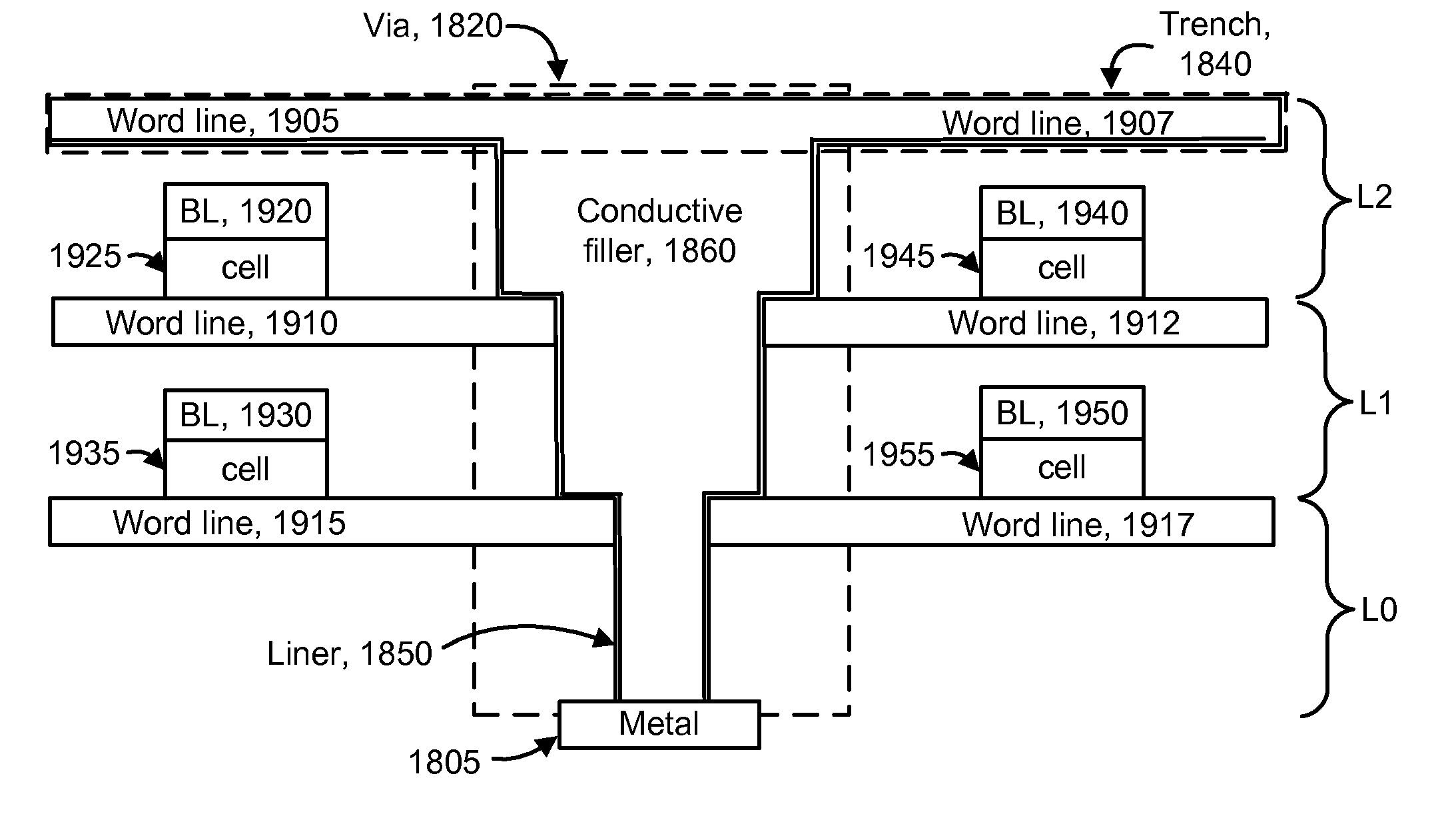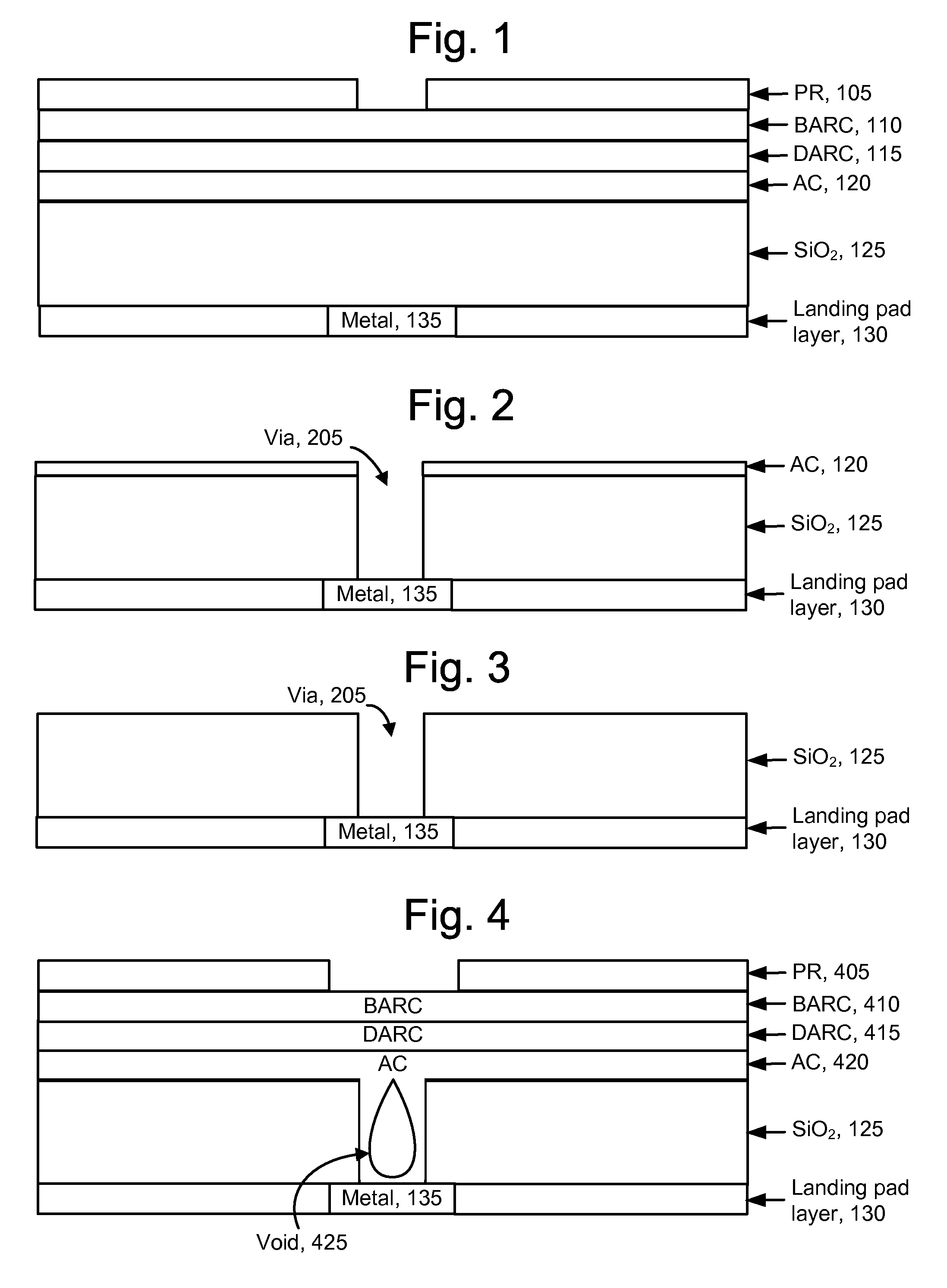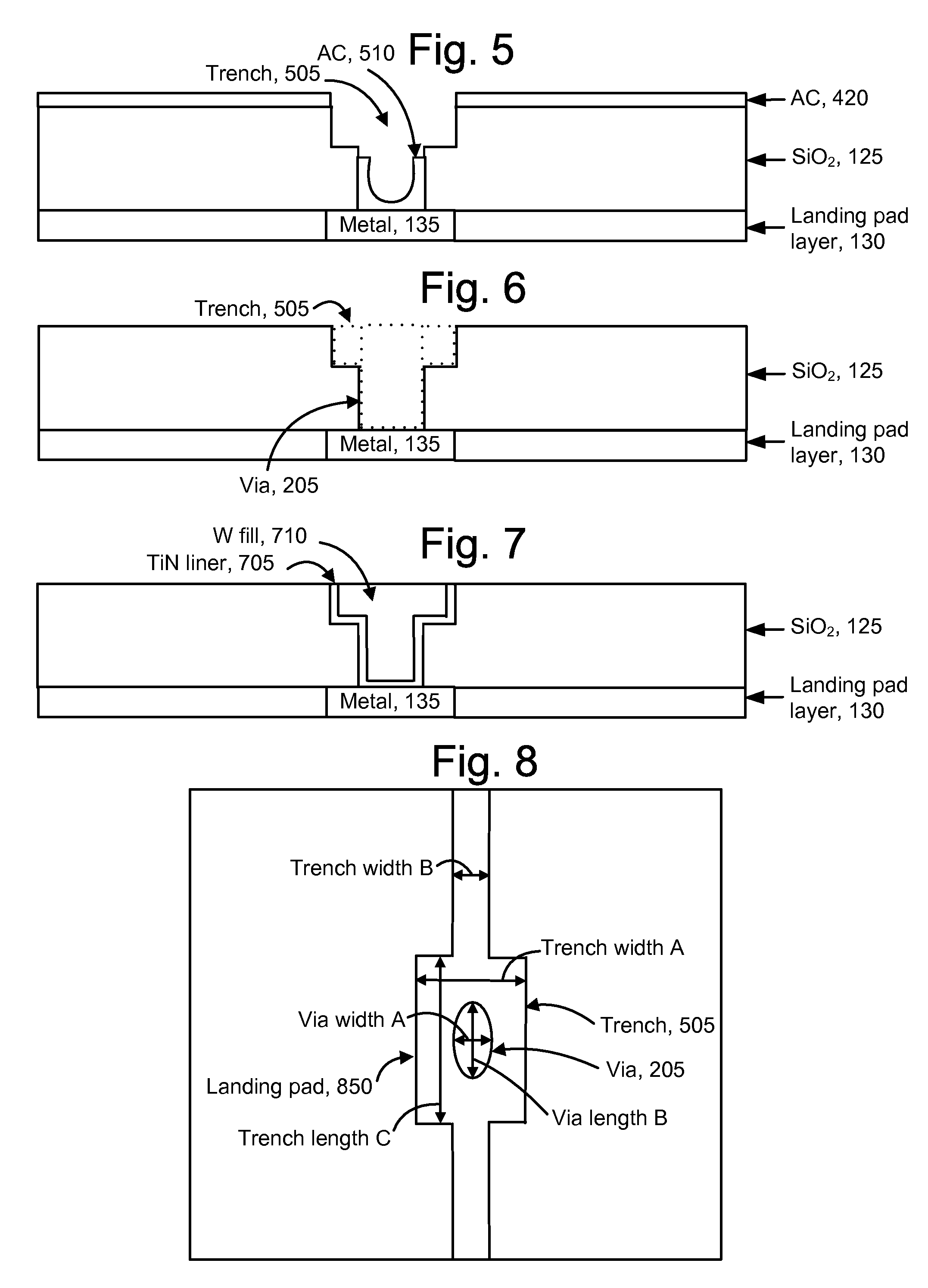Dual damascene with amorphous carbon for 3D deep via/trench application
a technology of amorphous carbon and damascene, which is applied in the direction of diodes, semiconductor devices, electrical apparatus, etc., can solve the problems of difficult etching of relatively deep vias and trenches between layers, insufficient conventional fabrication techniques, and inability to meet the requirements of 3d integrated circuits
- Summary
- Abstract
- Description
- Claims
- Application Information
AI Technical Summary
Benefits of technology
Problems solved by technology
Method used
Image
Examples
Embodiment Construction
[0032]The present invention provides a method for fabricating a 3-D monolithic memory device in which etching of vias and trenches is improved. A corresponding apparatus is also provided.
[0033]The following acronyms and abbreviations are used:[0034]AC—amorphous carbon;[0035]BARC—bottom antireflective coating, available from Brewer Science, Rolla, Mo.[0036]DARC—dielectric antireflective coating; and[0037]PR—photoresist.
[0038]As mentioned at the outset, etching of relatively deep vias and trenches between layers in a 3-D monolithic memory device can be problematic. A monolithic three dimensional memory array or device is one in which multiple memory levels are formed above a single substrate, such as a wafer, with no intervening substrates. The layers forming one memory level are deposited or grown directly over the layers of an existing level or levels. In contrast, stacked memories have been constructed by forming memory levels on separate substrates and adhering the memory levels a...
PUM
 Login to View More
Login to View More Abstract
Description
Claims
Application Information
 Login to View More
Login to View More - R&D
- Intellectual Property
- Life Sciences
- Materials
- Tech Scout
- Unparalleled Data Quality
- Higher Quality Content
- 60% Fewer Hallucinations
Browse by: Latest US Patents, China's latest patents, Technical Efficacy Thesaurus, Application Domain, Technology Topic, Popular Technical Reports.
© 2025 PatSnap. All rights reserved.Legal|Privacy policy|Modern Slavery Act Transparency Statement|Sitemap|About US| Contact US: help@patsnap.com



